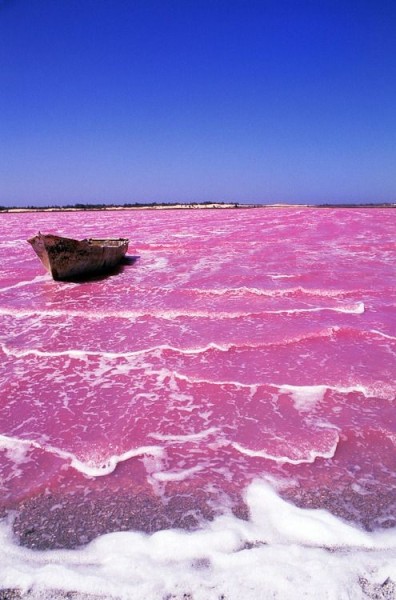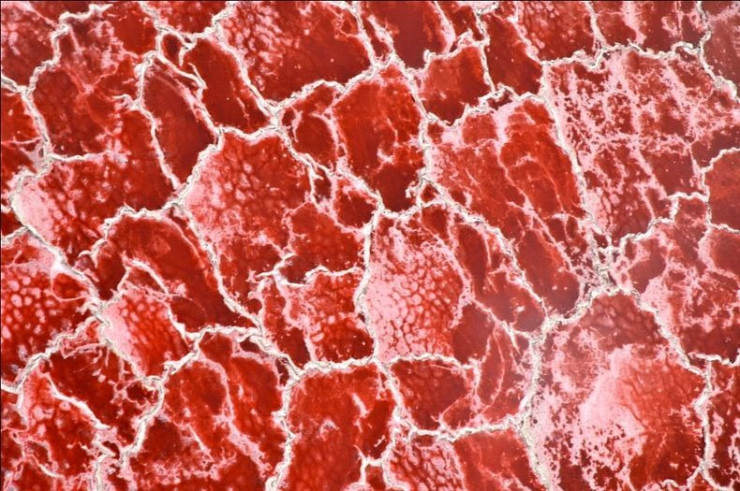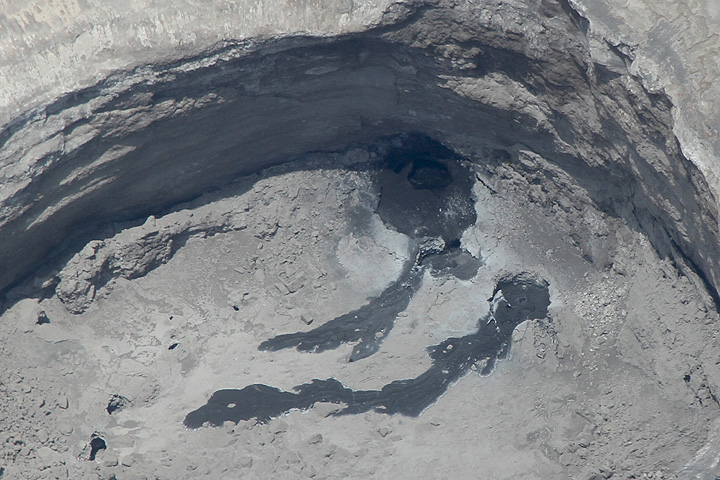
However, these conditions do not seem to bother the flamingoes, nor do they dissuade an endemic species of tilapia from inhabiting the waters at the edges of hotspring inlets. By some standards - temperatures exceeding 50 degrees Celsius (122 degrees Fahrenheit) and pH values of 9 to 10.5 (almost as alkaline or basic as ammonia) – the area would be considered inhospitable.


Spirulina, a blue-green algae that produces red pigments, thrives in this area, and is consumed by the several million flamingoes that inhabit the region, giving them their red color. The unusual coloration is due to the presence of microorganisms that feed on the salts that accumulate on the lake surface and the surrounding mud flats. On the right side of the image, just below Tanzania’s border with Kenya, lies Lake Natron (an oblong red splotch roughly oriented north to south). Some of the oldest fossils of early humans are also found in this area. The savanna (grassland with sparse trees) region is renowned for its biological diversity, especially the so-called “big five”: elephants, lions, leopards, rhinos, and Cape buffalo. The lake's temperature can rise to 60 ☌ (140 ☏) in summer! There are also hot springs on its eastern shore.The Serengeti Plain of Tanzania and Kenya dominate this image of Southeastern Africa. This red tinge to the water can even be seen from space! 6. The water of Lake Natron sometimes turns red (or orange-red) because of the algae that thrives in its hypersaline environment. The lake is actually the largest breeding ground in the world for lesser flamingoes! 5. Flamingoes thrive where others perishįlamingos aren't negatively affected by the bacteria in Lake Natron that harms most other birds. This is a good environment for the growth of a kind of bacteria that damages the innards of the organisms that drink it.

Lake Natron contains large salt, soda and magnesite deposits. Because the water coming into the lake leaches through the volcanic material of nearby Mt Ol Doinyo Lengai, the lake’s water is highly alkaline. The lake has no outlets, and receives most of its water from springs and episodic streams. Lake Natron receives only 400 mm of rain a year, and much of that is ‘phantom rain’ – rain that evaporates before hitting the surface. Here are some facts you'll want to share with others for the wow factor! 1.


 0 kommentar(er)
0 kommentar(er)
